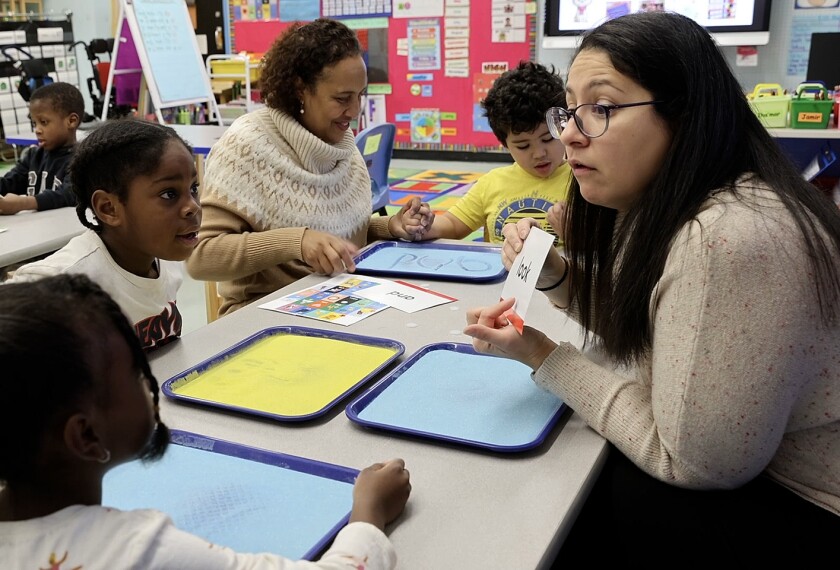States’ education representatives say they fear the reauthorization of the main federal special education law that may make its way to the Senate floor next month will test already tightly stretched state budgets.
A coalition of advocacy groups said the proposed reauthorization would spell out more demands on states, yet would not provide enough federal aid, which would bring about the same problems the states face in implementing the No Child Left Behind Act.
“The Individuals with Disabilities Education Act is like NCLB redux,” said David Shreve, an education lobbyist for the National Conference of State Legislatures. “They are asking for state money for federal programs.”
The coalition, which includes the NCSL, the National Association of State Directors of Special Education, the National Association of State Boards of Education, and the Council of Chief State School Officers, held a press briefing here last week to outline problems for states under the IDEA version pending in the Senate. The House passed its version of the bill April 30.
Even if the bill received “full funding” from the federal government, according to the group, it would still not be enough. One amendment expected to be heard on the Senate floor calls for reaching full funding over the course of several years.
When the law was first passed in 1975, Congress said the federal government would channel into special education as much as 40 percent of the national average of per-pupil spending. Many advocates for special education see the 40 percent level as a promise and refer to it as “full funding.” Others view it as the uppermost limit. The federal government has never reached the 40 percent mark and currently covers 18 percent of special education spending.
Growing Demand
As demands on states have grown for more data collection on and assessment of students with disabilities, the amount of IDEA money states are permitted to set aside for those purposes has shrunk, coalition members said.
The 1997 amendments to the IDEA allowed states to set aside 25 percent of their special education grants that year for state activities, plus an increase based on inflation each year thereafter. Since then, because IDEA federal funding has increased at a rate far surpassing the rate of inflation, the average state’s share of funds available for state activities has diminished to about 8 percent of their total IDEA funds, said Jordan Cross, the manager of federal- state relations for the CCSSO. The Senate version of the IDEA bill would set that level at 10 percent. But the House version maintains the current formula, the advocates said.
Meanwhile, the requirements for training special education teachers remain a hot issue.
The No Child Left Behind Act requires that all teachers, including special education ones, be certified in the core subjects they teach. That goal is unrealistic for special education teachers, who are often certified in special education but may teach multiple core subjects, some educators say.
The Senate’s IDEA bill attempts to clarify the rules for special education teachers by establishing separate requirements for new elementary, middle and secondary teachers, teachers who provide consultation to other teachers, and veteran teachers. The House version would require special education teachers to be highly qualified in the core subjects they teach.




